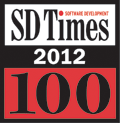I don’t consider myself a political person, but recent events in Europe have strongly prompted me to produce this piece reflecting on the state of continental politics. Specifically, the current crisis in the Euro-zone and how it relates to the ongoing issue of Turkish accession into the EU.
Disclaimer:
There’s two disclaimers before we may begin:
1) I am Turkish by birth. This naturally biases my perception of things.
2) I had a Greek employee at InstallAware who was the most proficient liar I have ever seen. Towards the end of our relationship, this person was actually getting so outrageous with his lies, that his defense of their truth was based on the suggestion that lies so outrageous would defeat their purpose, so they had to be true. It turns out this was only part of his lie-ability!
The West Needs to Get Over Greece
OK, today pretty much everywhere is “the West”, but I’m referring specifically to Europe and North America. Because these cultures trace their ancestry to ancient Greece – a most reasonable hypothesis – it is understandable that they are fascinated by Greece. However, this has been taken to extremes in modern times.
Sure, Socrates, Plato, Aristotle – they’re all cool dudes (Plato being a personal favorite of mine). But the West has become so obsessed with Greece, that fraternities/sororities on US campuses are choosing three letters from the Greek alphabet for their names and soliciting participants for the “Greek Life” on campus. Greek Life? Please. It’s really just a self-made delusion.
Leaving aside the issue of the under-representation of Indian and Asian thought in Western philosophy curriculums, there’s virtually nothing modern Greece has in common with ancient Greece.
Greece Lied Its Way Into the EU
Economically, for about half the time since gaining independence from the Ottomans (disclaimer: the Ottoman Empire is the precursor of modern Turkey), Greece has been in economic crisis; and for about the other half, in a state of declared bankruptcy.
Those aren’t good odds. Yet, the EU welcomed Greece in.
By now it is well established that Goldman Sachs helped the Greek government cook the books so they could be admitted into the EU.
In this day and age, how this could happen is beyond me on a rational basis.
However, given the fascination that the West has with Greece, this is understandable from an emotive basis.
And despite the knowledge of how modern-day Greece sneaked in their economic Trojan Horse into the EU being common knowledge, the EU continues to award Greek deceit by letting them remain in the Union, without any penalty for their gross misrepresentation.
In fact, this too I understand; given my previous experience with my Greek employee in the disclaimer: it’s simply so outrageous, that it could not possibly be true that this is a lie! But it’s still astounding when you get to see the same dynamics at play on a sovereign state level.
You really wouldn’t want to be a German taxpayer right now.
Double Standards Against Turkey
Turkish citizenry has long complained that the EU discriminates against Turkey through the application of double standards: a different set of rules by which Turkish progress is measured, compared to the remainder of the EU applicants.
Thanks to the whole Greek affair, we now know for a fact that, the EU is in the practice of applying double standards against Turkey.
The Irony
The irony in this all is that, Turkey is actually doing remarkably well.
In fact, for the first time in modern history, Turkish economy has had inflation in the single digits during the past decade.
This is nothing short of a miracle, given that the country endured 70% inflation for about five decades prior – the only country in the world to have had this experience of chronic inflation.
Other countries went to hyper-inflation (in the thousands), thereafter bringing their inflation down to single digits.
It appears the dream of accession into the EU has motivated Turkish performance very well.
To Be Fair…
Again, it’s completely understandable from an emotive perspective that the EU are not welcoming what would be the first non-Christian state into their Union with open arms. Turkish ancestry, after all, had invaded their way into half of Europe a few centuries ago.
However one would hope that the irony of the current situation is not lost on the EU.
A strong world needs a strong EU economy, and Turkish accession into the EU is still a dream cherished by many a Turk.
With the “EU dream” officially on the verge of collapse, maybe what they really need to do is dream bigger – and not smaller.
This great continent, apparently, cannot afford any less.
~S.


